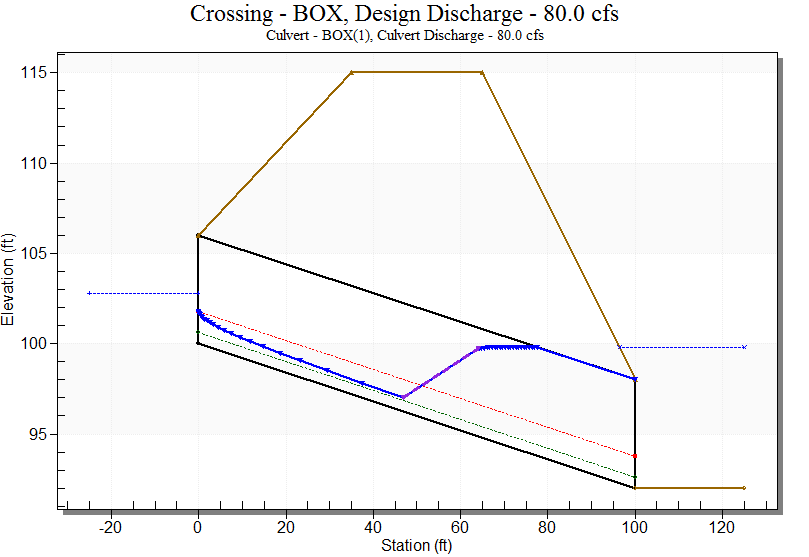HY8:Limitations: Difference between revisions
| Line 2: | Line 2: | ||
===Computed outlet velocity and tailwater elevation=== | ===Computed outlet velocity and tailwater elevation=== | ||
The user should be aware that when the tailwater elevation exceeds the elevation of the top of the culvert outlet, | The user should be aware that when the tailwater elevation exceeds the elevation of the top of the culvert outlet, the barrel may or may not flow full at the outlet. HY-8 determines a water profile using the direct step method in each direction and the sequent depth associated with each of the steps. If the sequent depth associated with the forward profile matches the depth along the backward profile through the culvert, a hydraulic jump occurs and the length of the jump is calculated from that location. Since the lengths of jumps have not been tested for all culvert sizes and slopes, only a limited set of equations are available for computing the lengths of jumps in HY-8. More information on the jump length computations is available [[in the section of this manual that describes hydraulic jump computations|WMS:HY-8_Hydraulic_Jump_Calculations#Determining_the_Length_of_a_Hydraulic_Jump]]. A water surface profile for this case is shown below. | ||
Revision as of 19:31, 15 December 2011
Limitations
Computed outlet velocity and tailwater elevation
The user should be aware that when the tailwater elevation exceeds the elevation of the top of the culvert outlet, the barrel may or may not flow full at the outlet. HY-8 determines a water profile using the direct step method in each direction and the sequent depth associated with each of the steps. If the sequent depth associated with the forward profile matches the depth along the backward profile through the culvert, a hydraulic jump occurs and the length of the jump is calculated from that location. Since the lengths of jumps have not been tested for all culvert sizes and slopes, only a limited set of equations are available for computing the lengths of jumps in HY-8. More information on the jump length computations is available WMS:HY-8_Hydraulic_Jump_Calculations#Determining_the_Length_of_a_Hydraulic_Jump. A water surface profile for this case is shown below.
The water surface profile for these cases is not realistic. In effect, HY-8 assumes a type of hydraulic jump occurs in the barrel. This may or may not be the case; HY-8 does not include a momentum analysis to truly determine if and where a hydraulic jump might occur. If, indeed, a hydraulic jump does occur, then the reported outlet velocity is correct. If not, then the outlet velocity reported in HY-8 may be too low. Caution must be exercised in these cases.
When the elevation of the tailwater does not exceed that of the top of the culvert outlet, then a profile such as the one shown below is presented. Note that the flow profile indicates that the outlet velocity is associated with the supercritical flow depth shown in the culvert barrel. In effect, HY-8 is reporting that no hydraulic jump will occur. If this is the case, then the outlet velocity shown is correct. If not, the outlet velocity shown in the performance table will be too high and energy dissipation should be considered.
Hydraulic Jumps
HY-8 does not attempt to show the location of a hydraulic jump in the culvert profile. Additionally, if more than one flow type exists for the culvert profile, HY-8 does not attempt to show multiple profiles.
NOTE: The user should be aware that when the tailwater elevation exceeds the elevation of the top of the culvert outlet, HY-8 assumes that the barrel flows full at the outlet and reports an outlet velocity corresponding to full flow. A more detailed description of this limitation is given in the Help document under the limitations topic.
Culvert Types
The following types of culverts are still not available
There are several culvert types, such as CONSPAN or HDPE plastic, which were unsupported in MS-DOS HY-8 and will continue to be unsupported in HY-8 version 7.0.
Partially buried culverts or culverts with natural stream bottoms remain unsupported in HY-8 version 7.0.
Broken Back Culverts
Culverts with multiple slopes (broken back) and adverse slopes remain unsupported.
